Fishes
Media
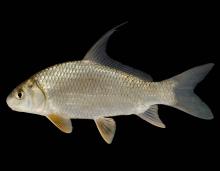
Species Types
Scientific Name
Carpiodes cyprinus
Description
Like our other carpsuckers, the quillback has a deep, rather thick body and a long, sickle-shaped dorsal fin. This silvery, hump-backed fish is widely distributed in Missouri.
Media

Species Types
Scientific Name
Moxostoma macrolepidotum
Description
The shorthead redhorse is the most widely distributed redhorse sucker in Missouri, occurring nearly statewide. No other Missouri redhorse is as adaptable in its habitat requirements. Many specimens have a pea-shaped swelling on the upper lip.
Media
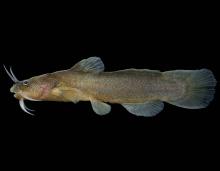
Species Types
Scientific Name
Noturus nocturnus
Description
The freckled madtom looks similar to the tadpole madtom and shares much of its range, but its upper jaw projects beyond the lower jaw, and the underside of the head and body are sprinkled with dark speckles.
Media
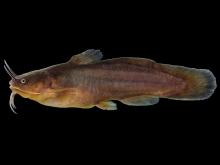
Species Types
Scientific Name
Noturus gyrinus
Description
The tadpole madtom occurs in the Bootheel lowlands and in a broad zone from southwest Missouri to northeast Missouri. This small, chubby catfish is most common in the Bootheel lowlands and in northeastern Missouri.
Media
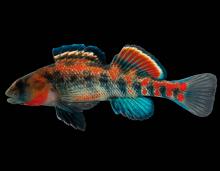
Species Types
Scientific Name
Etheostoma, Percina, Ammocrypta, and Crystallaria spp.
Description
Darters have been described as the hummingbirds of the fish world: colorful, small, and quick. Missouri has about 44 different types of darters. They are most diverse in the fast, clear, rocky streams of the Ozarks.
Media
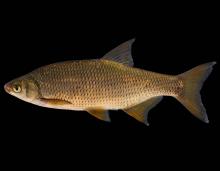
Species Types
Scientific Name
Notemigonus crysoleucas
Description
The golden shiner is a deep-bodied minnow with a greenish-olive back and a faint dusky stripe along the midline. It has a fleshy keel along the midline of the belly. It is widespread in Missouri.
Media

Species Types
Scientific Name
Labidesthes sicculus
Description
The brook silverside is a little fish that is very active in the daytime and on bright, moonlit nights.
Media

Species Types
Scientific Name
Ichthyomyzon castaneus
Description
The chestnut lamprey is an eel-like fish that many people find interesting because it's a vampire to other fish. Adults have a well-developed, rasplike oral disc, seven porelike gill openings, no paired fins, and a single nostril.
Media

Species Types
Scientific Name
Anguilla rostrata
Description
The American eel is considered an uncommon catch by Missouri sport anglers. This species is known to take natural baits and rarely takes artificial baits.
Media

Species Types
Scientific Name
Dorosoma petenense
Description
The threadfin shad occurs in the Mississippi River and its tributaries. It also occurs in mainstem reservoirs of the White River Basin and in Montrose Lake and the South Grand River in Henry County.
See Also


Media

Species Types
Scientific Name
Amphiuma tridactylum
Description
The three-toed amphiuma is an eel-like, completely aquatic salamander. It has very small forelimbs and hind limbs, each with three tiny toes. In Missouri it’s found only in the Bootheel region.
Media

Species Types
Scientific Name
Siren intermedia nettingi
Description
The western lesser siren is an eel-like, aquatic salamander with external gills, small eyes, small forelimbs with four toes, and no hind limbs. In Missouri, it’s found mostly in the Bootheel and northward in counties near the Mississippi River.
About Fishes in Missouri
Missouri has more than 200 kinds of fish, more than are found in most neighboring states. Fishes live in water, breathe with gills, and have fins instead of legs. Most are covered with scales. Most fish in Missouri “look” like fish and could never be confused with anything else. True, lampreys and eels have snakelike bodies — but they also have fins and smooth, slimy skin, which snakes do not.





















